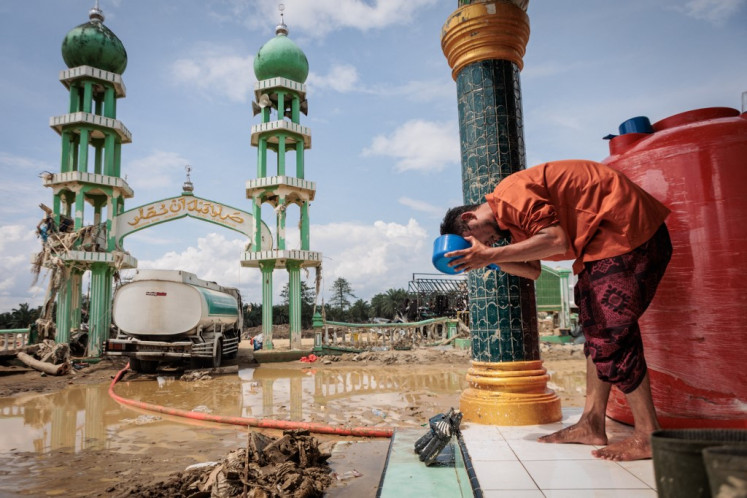Popular Reads
Top Results
Can't find what you're looking for?
View all search resultsPopular Reads
Top Results
Can't find what you're looking for?
View all search resultsMakassar dam threatened by sediment, experts say
Sedimentation at the Bili-Bili dam in Gowa regency, South Sulawesi, may halve the dam's lifespan and cut its capacity to prevent future floods in Makassar, an official says
Change text size
Gift Premium Articles
to Anyone
S
edimentation at the Bili-Bili dam in Gowa regency, South Sulawesi, may halve the dam's lifespan and cut its capacity to prevent future floods in Makassar, an official says.
The current sedimentation level has exceeded 70 million cubic meters, much higher than the dam's maximum capacity of 29 million cubic meters, said Muhammad Yunus, the head of the dam's management.
If nothing is done, the dam's expected operational lifespan might be halved from an initial estimate of 50 years, Yunus said.
The Bili-Bili dam, which was completed in 1998, is 30 kilometers from Makassar.
The dam was constructed in cooperation with Japan and intended to stop the Je'neberang River from flooding Makassar city.
Sedimentation at the dam worsened after a 2004 landslide near Mount Bawakaraeng created a caldera full of 200 million cubic meters of debris, said Mahendro, a riverbank official.
The debris has continued to be carried by the Je'neberang river into the dam, said Je'neberang and Walanae riverbanks management program section head Mahendro Harijanto.
Forest destruction along the riverbanks, which are also the dam's water catchment area, worsened the situation, he added.
Gowa Forestry Office head Djamaluddin Maknun confirmed that forest areas had been destroyed
His office has tried to stop residents from cutting down trees around the dam's water catchment area, he said.
However hills near the dam are mostly barren. Residents have cut down trees and planted corn, he added.
"We're in a difficult situation. The people said that they cut down the trees to support their livelihoods."
Maknun could not provide more specific information, but said that 12,000 of 63,000 hectares of forest near the dam were damaged.
The rate of erosion of the Je'neberang riverbank surface is estimated to be 2.3 million cubic meters per year, Mahendro said.
Surface erosion was facilitated by fragile land structures in the volcanic area, he added
Bili-Bili dam management's attempts to reduce sedimentation by sand pocket construction had stopped rocks only, while sand continued to pile up, Mahendro said.
Mud from the sand clouded the dam's water and disrupted supplies to tap water company PDAM, he added.
The local administration said that it would dredge mud from the dam and was awaiting the report of a research team from Hasanuddin University in Makassar.
"The team will try to discover if sediment can be used to make roof tiles, ceramic tiles or bricks," Yunus said.
The Bili-Bili dam supplies tap water, provides irrigation water for more than 44,000 hectares of rice fields in Gowa and Takalar regencies and powers a 20-megawatt hydroelectric power plant.
It can hold 375 million cubic meters of water in a reservoir 384 kilometers wide and 73 meters deep.










